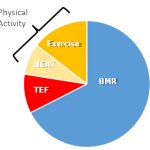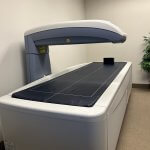When Counting Calories, do you weigh them before you cook or after?
With the New Year barely in the rearview mirror, many want to make healthier choices and shed some unwanted pounds. If you’re trying to lose weight, one of the critical things you need to do is understand your caloric intake and count calories. But when it comes to counting calories, there’s a debate over whether you should weigh your food before or after cooking it. So which is the better method? Let’s take a look at the pros and cons of both approaches.
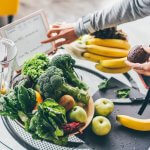 The difference between pre-cooked and post-cooked weight
The difference between pre-cooked and post-cooked weight
Knowing the difference between pre-cooked and post-cooked weight can be essential when preparing meals. Pre-cooked weight refers to food that is weighed before being cooked, which can be beneficial in determining portion size. Post-cooked weight includes the food item’s original weight and any added liquid or fat while cooking, making it a good indicator of nutritional value. When recipes call for pre or post-cooking weight measurements, they should always be considered, as ingredients may behave differently when subjected to different cooking techniques. Keeping track of pre/post-cooking weights throughout preparation can help one understand their dish’s true contents and impact on their overall diet. However, this can be tedious, so let’s figure out which to do, pre- or post-.
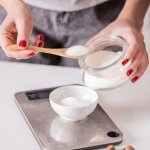 Why Weighing Food Before and After Cooking Creates Inconsistent Results in Meal Preparation
Why Weighing Food Before and After Cooking Creates Inconsistent Results in Meal Preparation
Accurate and consistent measurements are achievable with simple practices. For instance, logging foods before cooking yields the most definite figures because nutrition facts panels reflect a food’s packaged state. This is especially true for uncooked items like whole grains, lean proteins, and vegetables since their nutrient count remains unchanged by heat or other preparation methods. Remember that altering temperature, altitude levels, or seasoning can influence an item’s weight, as salt has mainly been known to alter moisture content in seafood and meats, changing both volume & mass.
When it comes to cooking, the consequences can be more than just a loss in flavor: Meat and seafood may experience up to 25% shrinkage, while vegetables’ volume could decrease by as much as 50%. This means that what starts as 150g of sweet potatoes before roasting might become merely 75g after maintaining the caloric count of 150g! Making sure your entries are accurate is an essential step toward achieving diet goals; always opt for entering food in its raw state where possible.
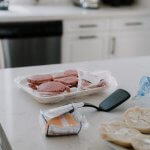 How Weighing Food Before Cooking Can Help Ensure Accuracy in Meal Prep and Calorie Counting
How Weighing Food Before Cooking Can Help Ensure Accuracy in Meal Prep and Calorie Counting
When tracking your diet and calorie count, it’s important to remember the extra ingredients that are often overlooked. For example, don’t forget about cooking oils when weighing foods after they have been prepared – those added fats can drastically change macro-nutrient ratios! Entering raw food before preparation helps ensure all the elements of a meal recipe are factored into your calculations.
The Skinny
With consistency being the key to accurate tracking results, it is essential not to enter some foods before cooking and others after. However, all tracking apps are designed conveniently – they’ll remember your most frequently used foods, so you don’t have to log them every time from scratch! As a bonus tip: The more that’s logged into the app regularly, the faster food entries will become for any mealtime situation.
Bonus: What about when I am eating out?
When eating out, it can be difficult to keep track of your calorie intake. However, there are ways to ensure you’re still counting calories accurately. First, try and opt for meals that have nutrition information listed on the menu or website. If that’s not an option, use a smartphone app like MyFitnessPal, which allows you to quickly and easily look up the estimated calorie count of multiple restaurant dishes. Additionally, it can be helpful to stick with familiar menu items of which you already know the approximate calorie content. Knowing how much food is on your plate can also help estimate a dish’s caloric value; remember that the bigger the portion, the more calories it is likely to have. Lastly, try splitting portions or taking meals home to reduce caloric intake. With a little effort, counting calories while eating out can still be done accurately!
One more bonus: Log before you eat!!
It pays to research and plan beforehand to help ensure you stay within your caloric budget when dining out. Choose what you’d like to eat ahead of time so that when the occasion arises, you can order confidently without making any hasty decisions due to hunger or holding up your dinner guests!



 g, and becoming fit.
g, and becoming fit.